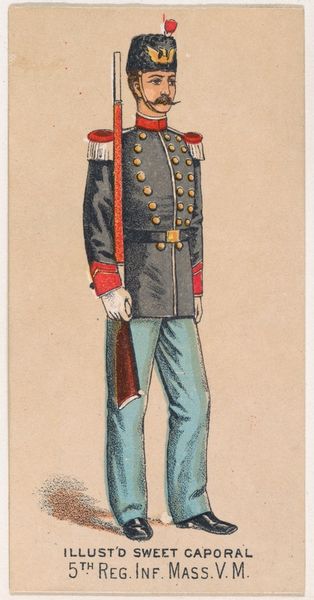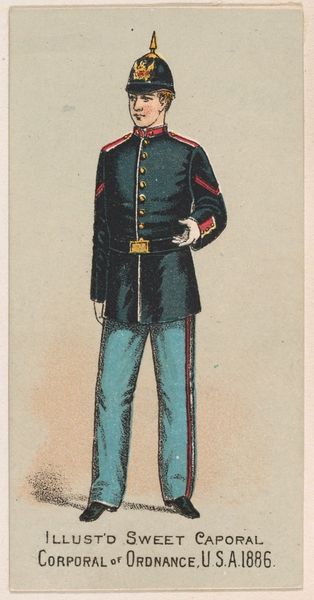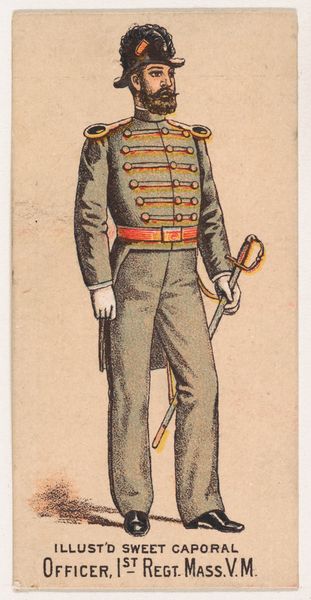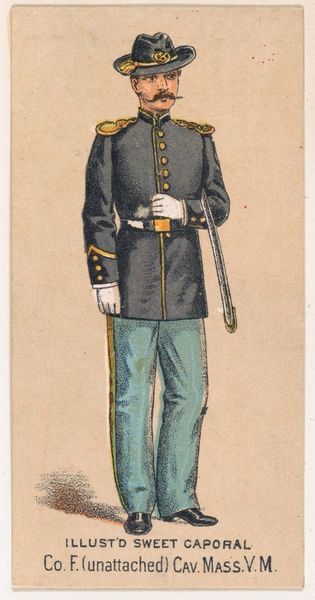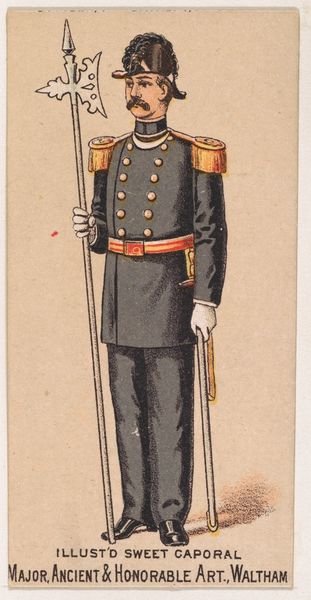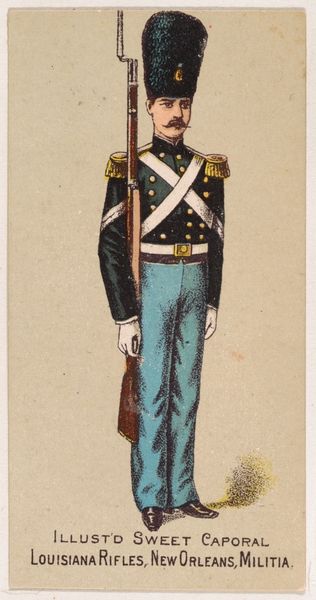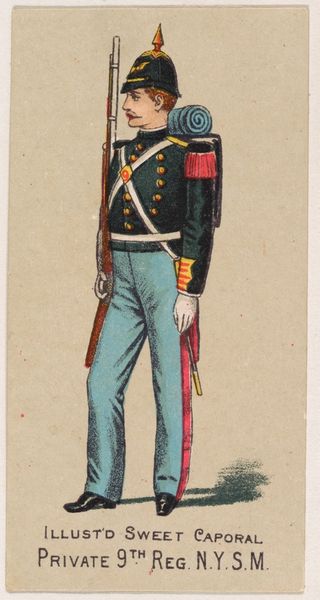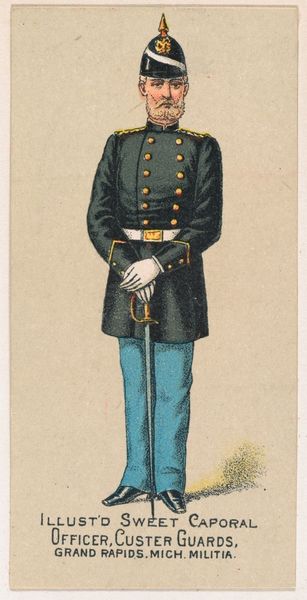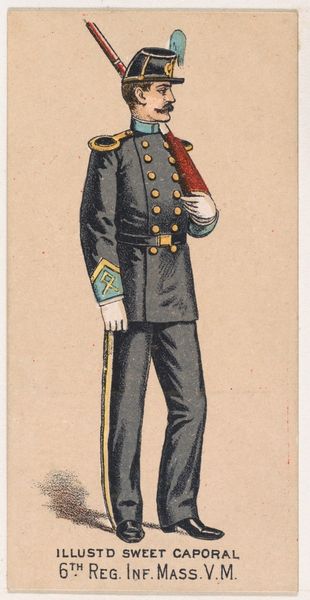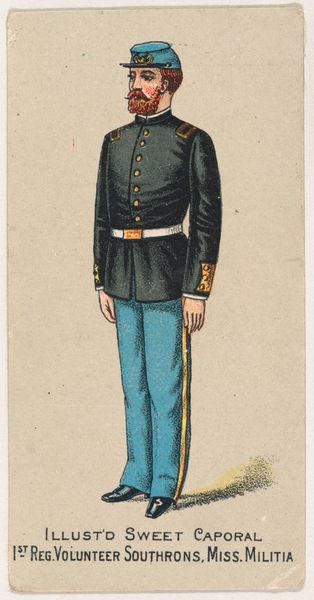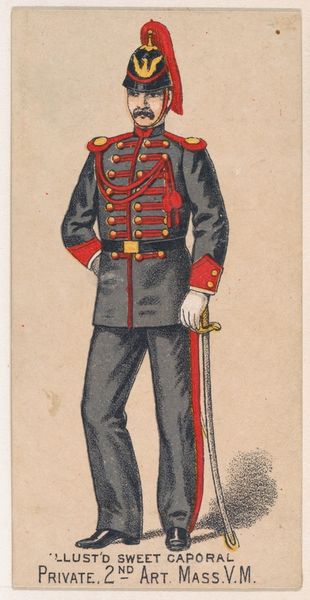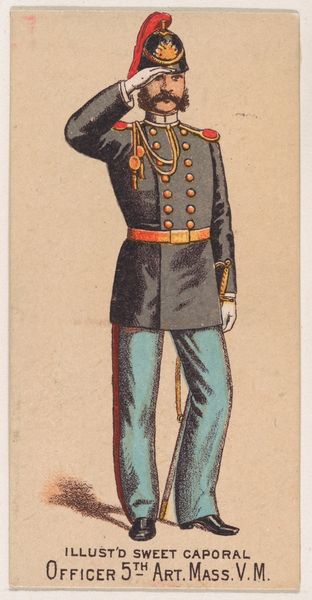
Brigadier General, N.Y.S.M., from the Military Series (N224) issued by Kinney Tobacco Company to promote Sweet Caporal Cigarettes 1888
0:00
0:00
Dimensions: Sheet: 2 3/4 × 1 1/2 in. (7 × 3.8 cm)
Copyright: Public Domain
Editor: So, this is "Brigadier General, N.Y.S.M." from 1888, by Kinney Brothers Tobacco Company. It's a print, originally a tobacco card! There's something a little funny about this formal portrait on such cheap material. What catches your eye? Curator: It's fascinating how mass production infiltrates even high-status symbols. Kinney Tobacco Company mass-producing this image – what does it mean to take a Brigadier General, a figure of authority, and commodify his image on a product meant for mass consumption? Editor: Well, it's definitely making him more accessible, right? Democratizing the image of power? Curator: Perhaps. But I wonder about the laborers involved. Who were the artists and printers replicating this image, likely under harsh working conditions? Their labor, usually invisible, is crucial to the circulation of this symbol of military authority. Consider also that this was printed to advertise cigarettes. What's the relationship between military power, commercial advertising, and a culture of consumption? Editor: So, the card itself, as a material object produced and circulated, tells a bigger story about power and labor. It makes you think about the whole system, not just the individual. Curator: Exactly. It's not just about the General’s romantic image. The card also acts as a window into understanding class divisions through materials and means of production at the time. It brings visibility to these processes of production that are frequently disregarded when analyzing historical artwork. What I see when looking at the piece as a whole is the role of capital, class and industrial production on art. Editor: I hadn't considered the production angle so deeply before. I see now it shifts the focus away from just the subject of the portrait and towards these broader themes. Curator: Indeed, we can see that the material process is as important as the image itself in defining its place in culture and in the construction of art history.
Comments
No comments
Be the first to comment and join the conversation on the ultimate creative platform.
